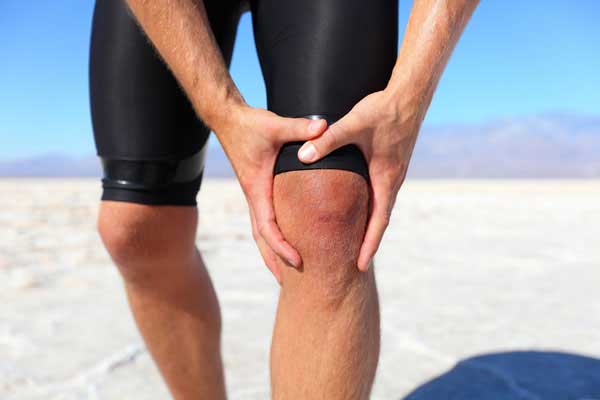Description: Knee injuries are very common. Here are some of the most notorious knee injuries and tips to avoid them.
One of the most problematic areas of the body is the knee. It’s that part of the body that often gets damage, spelling doom for many pro athletes like basketball players and football players. In fact, knee injuries make up 55 percent of all sports-related injuries.
You don’t even have to be a pro athlete to incur a knee injury. Whether you’re into running or heavy lifting, you are at risk of knee injuries. While most people think that knee injuries can happen all of a sudden, the fact is that there are several things that you can do to prevent the prospect of knee problems.
Here are some of the most common knee injuries and how you can prevent them.
Runner’s Knee
 Runner’s knee is characterized by pain felt behind or around the knee cap. You’d know you have this injury when you feel pain whenever you bend your knee. The pain usually becomes unbearable when walking downstairs.
Runner’s knee is characterized by pain felt behind or around the knee cap. You’d know you have this injury when you feel pain whenever you bend your knee. The pain usually becomes unbearable when walking downstairs.
A misconception about this injury is that it only affects runners, hence the name. But even weight lifters can also experience symptoms of this injury. It may even be caused by factors such as direct blow to the knee, weak quadriceps, and having flat feet.
So how do you avoid getting runner’s knee? One way would be to develop hip stability in the frontal plane. You could do so by doing lots of front and side planks. You can also do step-up-to balance, wherein you step up unto a box then bring your other leg up into a flex position. Hold it for a few seconds.
These exercises should improve your hip strength, hence preventing stress to come down on the knees.
You should also warm up every time you run. Allot five minutes for brisk walking so you can break a sweat and prepare your knees for the work out. Once you feel warmer, stretch the main muscles that you will be using like the quadriceps up front and the hamstrings at the back. Don’t forget to stretch the calves as well. You can use a foam roller to stretch and massage these muscles.
Build up speed gradually. Don’t run as fast as you can in the first minute or so of your workout. Steadily building up your pace is the best way to improve your cardiovascular endurance without risking injury.
IT Band Syndrome
The illiotibial or IT band syndrome develops due to the irritation of a fibrous tissue that extends from the outside of the pelvis and inserts just below the knee. IT band syndrome when this tissue is irritated. You’ll feel pain outside of the knee, or just above it, when you have this syndrome. When not handled or treated well, it can lead to meniscus tears which would require surgery.
This injury is usually due to a sudden increase in the level of activity of a person. For instance, a novice runner can be at risk of this injury when he or she engages in sprint-heavy workouts without jogging first.
So how do you prevent this injury? You should perform stretching exercises that target the glutes, hip flexors and outside of the leg. You should also do a lot of side planks, side lunges and side steps to improve lateral hip stability.
Jumper’s Knee
Jumper’s knee is another common knee injury that as the name suggests, is due to excessive jumping. You will likely get this knee problem if you engage in sports like basketball and volleyball.
This injury is characterized by pain at the bottom and front of the kneecap. You may also feel some stiffness in the knee after a workout. Sometimes, you’ll experience the pain after training. But there are also times wherein the pain can be felt anytime of the day, hampering your day-to-day activities in the process.
To avoid this injury, always stretch the quadriceps properly and regularly.
Ligament Tears
Knee ligament tears like ACL and MCL tears are arguably the most dreaded of knee injuries. Most of these tears develop over time. However, there are also times when tears are sudden and severe in terms of damage. Getting a ligament tear usually involves a loud pop coming from the knee. Then swelling, pain and joint looseness follow when you put weight on the injured leg.
As in the case of most of the knee injuries mentioned in this article, you should warm up before engaging in aerobic activities to prevent ligament tears. Warming up should prepare your ligaments for the activity, limiting the probability that a ligament will be ‘shocked’ with sudden motion. You also have to cool down by stretching the leg muscles, so that the MCL or ACL won’t tighten before your next activity.
So the next time you head to a gym like 24 Hour Fitness or Anytime Fitness, remember to warm up first before working out to avoid these common knee injuries.
